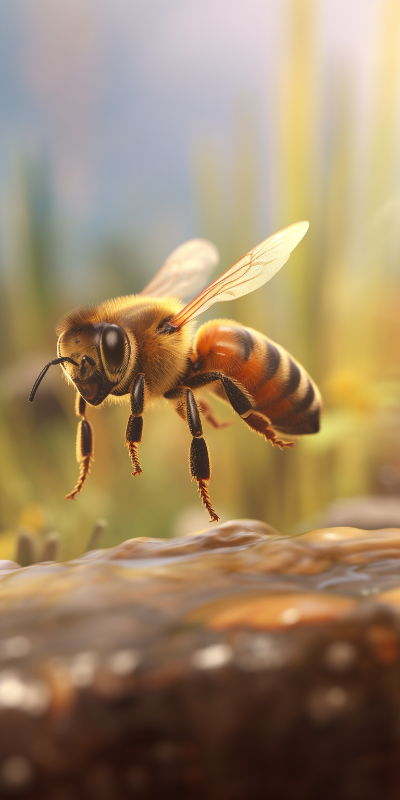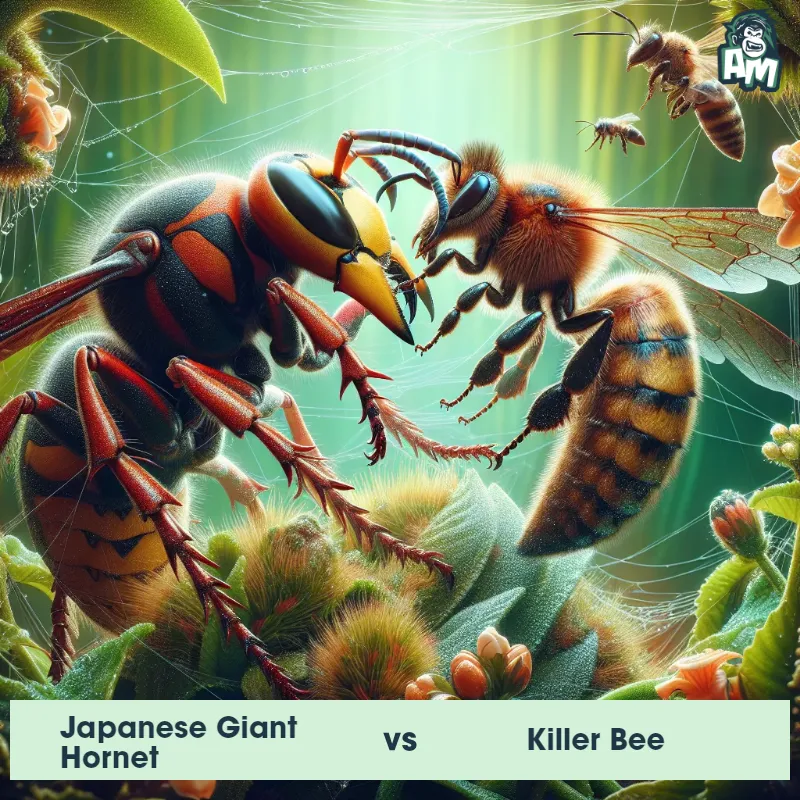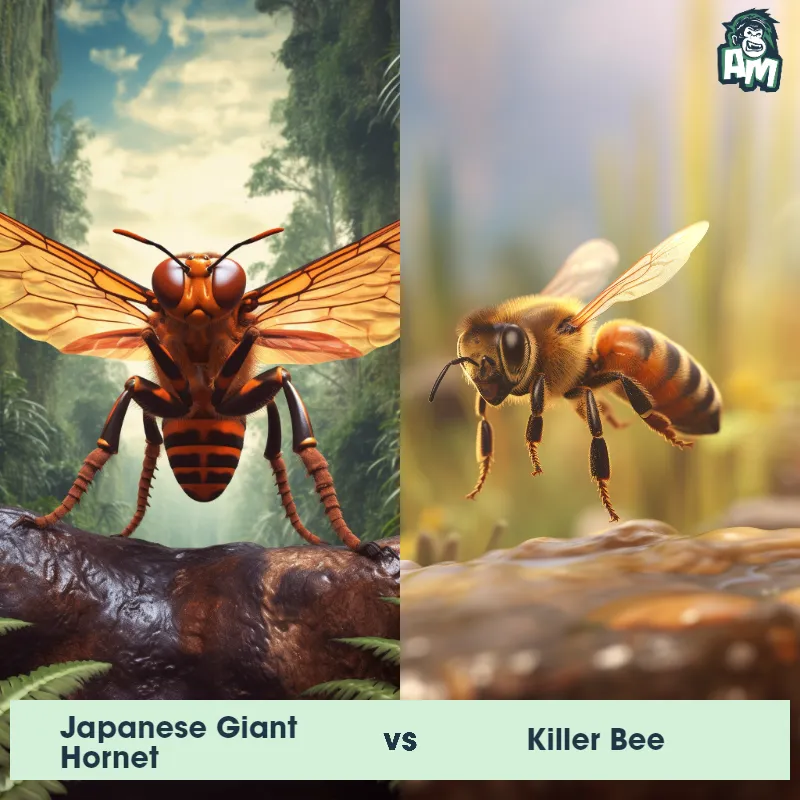The Killer Bee
The Killer Bee, also known as the Africanized honey bee, is a hybrid species that originated from the interbreeding of European honey bees and African honey bees. These bees are known for their aggressive behavior, often attacking in large numbers when disturbed. They are slightly smaller than European honey bees and have distinct physical traits, such as having a darker coloration and shorter wings. Killer Bees are incredibly adaptable and can thrive in a variety of environments, making them a formidable force to reckon with.

| Killer Bee | |
|---|---|
| Size | 0.5 inches (1.27 cm) |
| Weight | 0.1 grams (0.0035 ounces) |
| Speed | Speed: 12 mph (19.31 km/hr) |
| Key Strength | Ability to swarm and sting in large numbers |
| Biggest Weakness | Vulnerable to smoke and cold temperatures |
| Scientific Name | Apis mellifera scutellata |
| Family | Apidae |
| Habitat | Nest in hollow trees, rock crevices, and man-made structures |
| Geography | Originally from Africa, now found in South and Central America, and parts of the southern United States |
| Diet | Nectar and pollen from flowers |
| Lifespan | 1 month - 2 months |

The Killer Bee
The Killer Bee, also known as the Africanized honey bee, is a hybrid species that originated from the interbreeding of European honey bees and African honey bees. These bees are known for their aggressive behavior, often attacking in large numbers when disturbed. They are slightly smaller than European honey bees and have distinct physical traits, such as having a darker coloration and shorter wings. Killer Bees are incredibly adaptable and can thrive in a variety of environments, making them a formidable force to reckon with.
Fun Fact: Killer Bees are known for their extraordinary defensive behavior, as they have been documented pursuing their targets for up to a quarter of a mile, even going through barriers such as water or dense vegetation, in order to protect their hive.
| Killer Bee | |
|---|---|
| Size | 0.5 inches (1.27 cm) |
| Weight | 0.1 grams (0.0035 ounces) |
| Speed | Speed: 12 mph (19.31 km/hr) |
| Key Strength | Ability to swarm and sting in large numbers |
| Biggest Weakness | Vulnerable to smoke and cold temperatures |
| Scientific Name | Apis mellifera scutellata |
| Family | Apidae |
| Habitat | Nest in hollow trees, rock crevices, and man-made structures |
| Geography | Originally from Africa, now found in South and Central America, and parts of the southern United States |
| Diet | Nectar and pollen from flowers |
| Lifespan | 1 month - 2 months |
Match Highlights
Killer Bee Matchups
We use AI to simulate matchups between the Killer Bee and other animals. Our simulation considers size, strength, and natural predatory behaviors to determine the most likely outcome.

Can't find the Matchup you want?
Create Your Own MatchupKiller Bee: Diet, Predators, Aggression, and Defensive Behaviors
What do Killer Bees eat?
Killer Bees, also known as Africanized honey bees, primarily feed on nectar and pollen like other bee species. They collect nectar from flowers to make honey, which serves as their main source of nutrition.
Do Killer Bees have any predators?
While Killer Bees do not have many natural predators, some animals such as birds, spiders, and certain insects may prey on them. Additionally, human interventions like pesticides and habitat destruction pose a threat to their population.
Are Killer Bees aggressive?
Killer Bees are known for their aggressive nature compared to other bee species. They are more likely to respond to disturbances near their hives by stinging in large numbers, sometimes chasing invaders for long distances. This behavior is a result of their genetics and defense mechanisms.
Do Killer Bees fight?
Killer Bees may engage in fights with other bee colonies, especially if they perceive a threat to their hive or resources. These conflicts can result in intense battles where bees from different colonies sting each other to defend their territory.
How do Killer Bees defend themselves?
Killer Bees defend their hives using a combination of aggressive behavior and pheromones. When they sense a threat, they release alarm pheromones that signal other bees to attack the intruder. They may also swarm the perceived threat and sting in large numbers to protect their colony.
What is Killer Bees' biggest weakness in a fight?
Despite their aggressive nature, Killer Bees have a weakness when it comes to extreme temperatures. They are sensitive to cold weather, which can affect their flight and foraging abilities. Additionally, prolonged exposure to high temperatures can also impact their overall health and survival.
Fun Fact: Killer Bees are much more likely to respond aggressively to disturbances compared to other honey bees, as they have a quicker alarm signal response time and release more alarm pheromones, which can attract more of their hive members to join the attack.
Fun Fact: Killer Bee attacks can be lethal, especially to individuals who are allergic to bee stings or when the victim is attacked by a large number of bees. However, their venom is not more potent than regular honey bees, meaning their stings do not have a higher toxicity level.
























